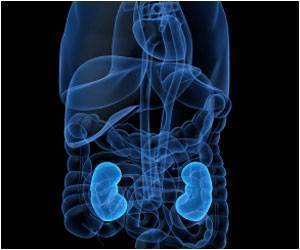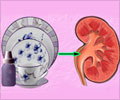Most patients with chronic kidney disease who undergo hemodialysis put up with a grueling treatment regimen that involves going into a clinic several

Home hemodialysis is one type of dialysis therapy, but it is available to less than 2% of dialysis patients in the country. Home hemodialysis requires extensive patient training, nursing education, and infrastructure support to maintain a successful program. Also, reluctance to start such programs is widespread because many physicians do not have experience with home hemodialysis.
Bessie Young, MD (University of Washington, Seattle) worked with Dr. Mehrotra and others to provide an in-depth review to describe the benefits and barriers to home hemodialysis, focusing on patients, physicians, practices, and dialysis facilities.
Benefits of home hemodialysis include:
- Potential for greater dialysis delivery (more frequent or overnight treatments)
- Improved quality of life
- Patient independence and employment potential
- Greater ability to travel
- 20%-50% less costly than in-center hemodialysis depending on the machine.
Barriers to home hemodialysis include:
Advertisement
- Patients'' perceptions, including fear of change and lack of self-confidence
- Physicians'' education about home hemodialysis
- Machine complexity, which is now minimal with newer, easier-to-use systems
- Inadequate payment to providers for home hemodialysis training.
"Home hemodialysis has been successfully used by thousands of patients and should be available to everyone on or initiating dialysis. It is a safe, efficient modality that allows patients the ability to increase their frequency of dialysis, which may provide a potential survival benefit," said Dr. Young.
Advertisement
Disclosures: Christopher Chan serves as a member of the scientific advisory board for Baxter Healthcare. Christopher Blagg is a consultant to DEKA Research and Development Corporation. Robert Lockridge serves as a member of the scientific advisory board for Fresenius Medical Care. Thomas Golper conducts consultant activity for Baxter, Fresenius, DaVita, Takeda-Affymax, and Q Source. Fredric Finkelstein serves as a member of the scientific advisory board for NxStage and conducts consultant activity for Baxter Healthcare. Rachel Shaffer is an employee of the American Society of Nephrology. Rajnish Mehrotra has received grant support and/or honoraria from Baxter Healthcare, DaVita, Mitsubishi, Shire, Takeda, and Vifor.
The article, entitled "How to Overcome Barriers and Establish a Successful Home HD Program," will appear online at http://cjasn.asnjournals.org/ on October 4, 2012, doi: 10.2215/CJN.07080712.
The content of this article does not reflect the views or opinions of The American Society of Nephrology (ASN). Responsibility for the information and views expressed therein lies entirely with the author(s). ASN does not offer medical advice. All content in ASN publications is for informational purposes only, and is not intended to cover all possible uses, directions, precautions, drug interactions, or adverse effects. This content should not be used during a medical emergency or for the diagnosis or treatment of any medical condition. Please consult your doctor or other qualified health care provider if you have any questions about a medical condition, or before taking any drug, changing your diet or commencing or discontinuing any course of treatment. Do not ignore or delay obtaining professional medical advice because of information accessed through ASN. Call 911 or your doctor for all medical emergencies.
Founded in 1966, and with more than 13,500 members, the American Society of Nephrology (ASN) leads the fight against kidney disease by educating health professionals, sharing new knowledge, advancing research, and advocating the highest quality care for patients.
Source-Newswise









